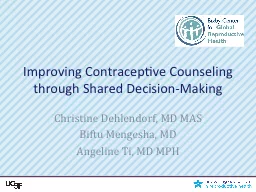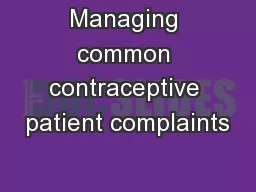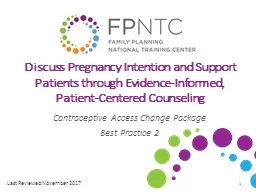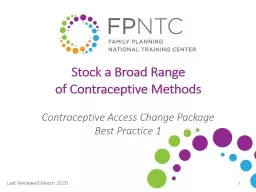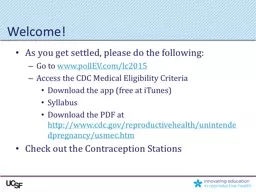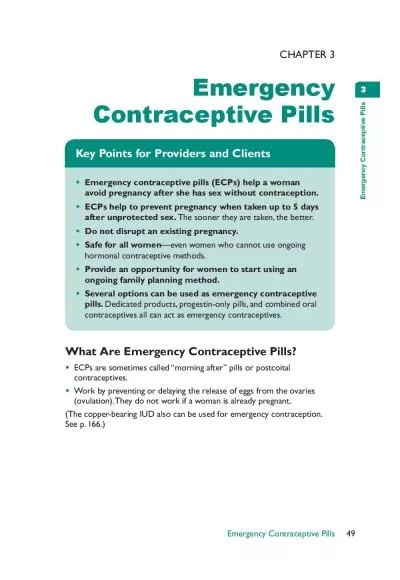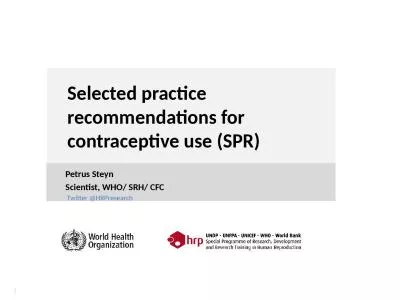PPT-Improving Contraceptive Counseling through Shared Decision-
Author : stefany-barnette | Published Date : 2017-04-03
Christine Dehlendorf MD MAS Biftu Mengesha MD Angeline Ti MD MPH Structure of Course Part 1 Overview of shared decision making Part 2 Roleplaying Part 3 Casebased
Presentation Embed Code
Download Presentation
Download Presentation The PPT/PDF document "Improving Contraceptive Counseling throu..." is the property of its rightful owner. Permission is granted to download and print the materials on this website for personal, non-commercial use only, and to display it on your personal computer provided you do not modify the materials and that you retain all copyright notices contained in the materials. By downloading content from our website, you accept the terms of this agreement.
Improving Contraceptive Counseling through Shared Decision-: Transcript
Download Rules Of Document
"Improving Contraceptive Counseling through Shared Decision-"The content belongs to its owner. You may download and print it for personal use, without modification, and keep all copyright notices. By downloading, you agree to these terms.
Related Documents

